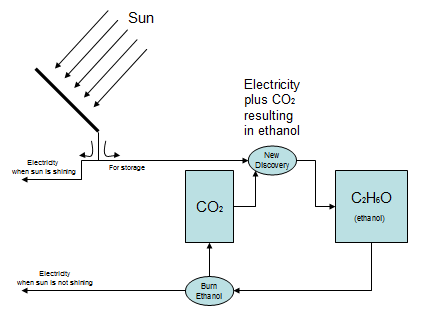Hence, the use of excess solar energy during the day to "charge" the ethanol plant. Then, the ethanol is used at night.
The big problem with solar energy right now is storage for night use. Li-ion battery technology is well known, but too expensive.
Yes, but it will be a while before we have enough excess solar to make it worthwhile to try to harvest it. If it only happens occasionally, it just isn't worth the capital costs.
In the US, we get about 1.25% of our electricity from solar (from wiki - that's actually higher than I thought, as it is including an estimate of the output of home solar, as those numbers aren't recorded anywhere).
But when you start to get larger
average numbers from solar PV, you hit the need for storage (or decide to waste it) pretty quickly. Some rough
simplified numbers to illustrate:
Figure that most of the solar energy occurs in the mid 6 hours of the day, just 1/4 of the day. So the energy during those 4 hours has to 4x the
average output number. So to hit a 25% average on the grid, it has to produce 100% of the grid energy during those 6 hours.
And of course it gets worse than that, with seasonal variations, and days of snow/cloud cover.
That's offset some by the fact that demand is higher during the day. Charts I've seen put daytime demand at ~ 2x nighttime demand, so daytime would be ~ 1.33 x average, and nighttime ~ 0.67 x average.
So the peaks/excess will be intermittent, seasonal, and last only a few hours on the days they occur. That's a tough situation to make back your capital investment in any kind of storage system.
It might make sense to forget about storage, and use the solar to make fuel for cars. High energy dense fuel like methanol or ethanol is a very high value product with few alternatives.
-ERD50


